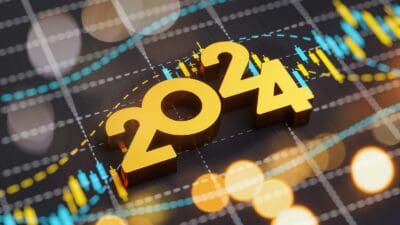It’s daunting when you look at those financial figures that companies hand out, isn’t it? But they’re necessary because some of the most common measures are actually very useful for investors and they’re really not too hard to understand.
Price-to-earnings ratio
What does it mean if a share costs, say, 100p? It depends on what that share actually earns for us, and a 100p share making 10p in earnings per share (EPS) would be a lot more attractive than a 100p share earning just 5p.
To get a measure of this, we can divide the share price by the EPS figure to give us the price-to-earnings (P/E) ratio. In this case our two shares would be on P/E ratios of 10 and 20, respectively.
Generally, lower is better. But it varies depending on expected future returns. So while the average P/E for the FTSE 100 is around 14, a company with high growth expectations (eg ARM Holdings on 29) or one paying safe and reliable dividends (like Unilever on 21) will often command a higher P/E.
Dividend yield
With dividends the straight cash figure doesn’t mean much either. A 10p dividend from a 100p share would be great, but 10p from a 1,000p share wouldn’t. So what we do is divide the dividend by the share price to tell us a yield in percentage terms.
Something called dividend cover is also important, as a high yield that can’t be paid from a company’s earnings is risky — so we also need to compare EPS with the dividend. Some companies pay out most of their earnings as dividends and only need low cover, like Centrica with 6% dividends covered about 1.3 times. Others need to reinvest more of their earnings and so keep dividend cover higher, like BAE Systems with cover around 1.8 times on a 4.2% yield.
Price-to-cash flow
The way accounting goes, it’s possible for companies to record income before the cash arrives, and there are all sorts of ways to boost EPS without actually seeing any money.
An infamous recent example was Watchstone Group (previously known as Quindell), which was found to be recording profits it hadn’t yet earned (and which it couldn’t be sure of earning) in a way that pushed the rules to the limit. The result was catastrophe.
That’s where the price-to-cash flow (PCF) ratio comes in — it’s like the P/E but compares the share price to actual cash flowing in rather than booked earnings, so you can see the genuine bottom line.
Debt
It’s possible for a company to boast healthy P/E and PCF ratios and be offering a decent dividend yield, yet still be on the verge of going bust. That can happen when a company has a lot of debt.
Oil explorers are prime examples. Financing their explorations from debt when oil was fetching $100 a barrel looked sensible, but with the price much lower, it’s harder for some to meet debt repayments. In a spectacular recent example, Afren went bust for this very reason. Keep an eye on the debt levels of your companies.
Price-to-book value
How do we value companies that aren’t profitable yet and so have no P/E, dividend yield or PCF to go on? We can look at the value of their net assets, which should be the eventual means of making profits. If we compare a share price to the company’s recorded net asset value per share, we get the price-to-book value (PBV) ratio.
Again oil explorers are a good example, with Rockhopper Exploration valued on the basis of its Falklands basin oil assets (and on a PBV of less than 0.5) in the absence of any profits. But it’s important to understand the basis of asset values, as they might have been calculated when oil was pricier, for example.







